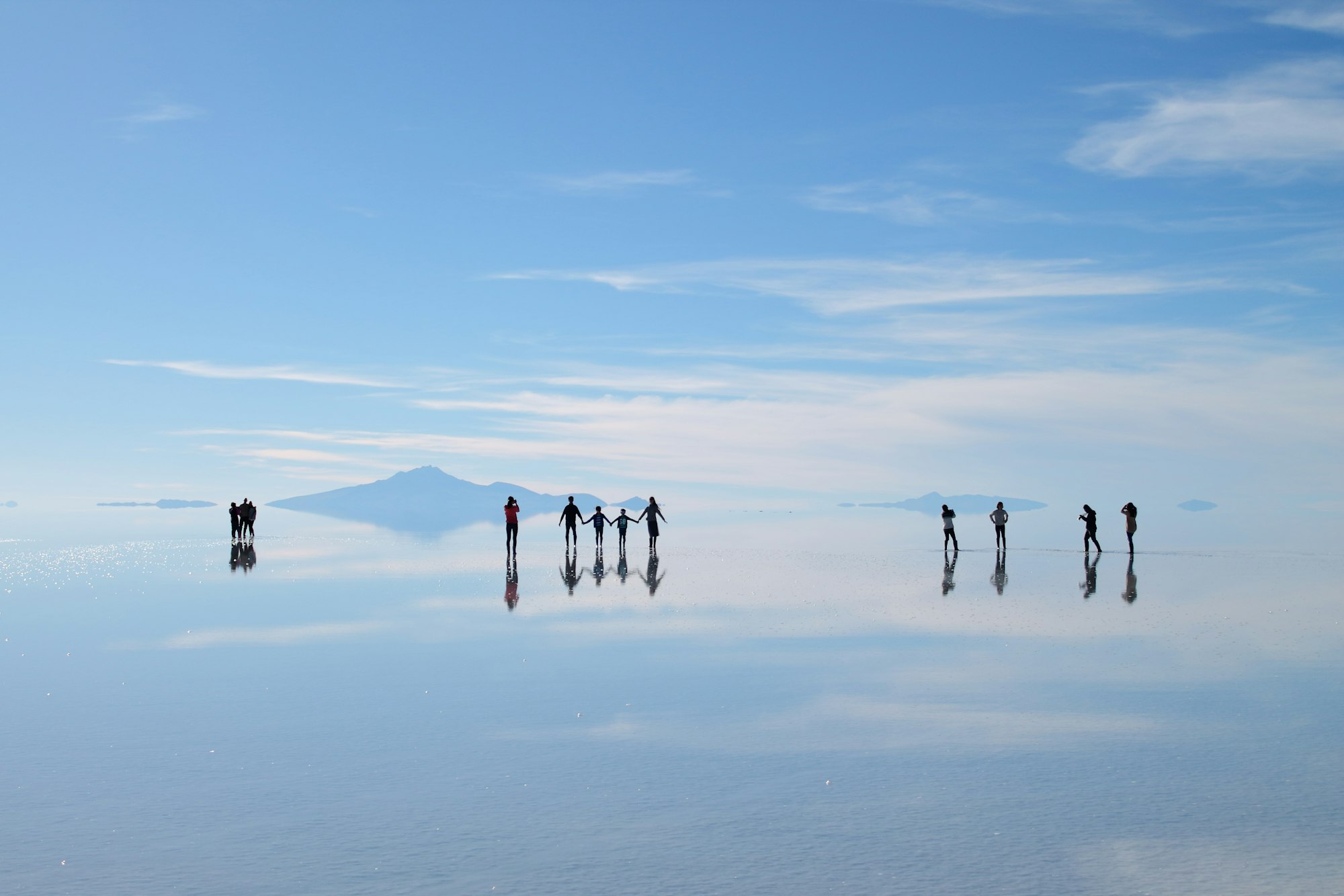Singing Sand Dunes: Nature's Desert Symphony Waiting to Be Discovered
From North America to Asia, welcome to the world of singing sand dunes, where the desert literally speaks to those willing to listen.

You're standing in the middle of nowhere, surrounded by towering dunes, when suddenly the sand beneath your feet starts humming a low, haunting melody. No, you're not losing it—you've just stumbled upon one of nature's coolest acoustic tricks. Welcome to the world of singing sand dunes, where the desert literally speaks to those willing to listen.

Practical Travel Tips for Dune Chasers
Most singing sand dunes are remote. Qatar's dunes are accessible by a regular sedan car from Doha, while others may require a 4WD vehicle or a guided tour. Research the road conditions in your specific destination before heading out.
What to bring
- Closed-toe shoes (the sand gets scorching hot).
- Plenty of water.
- Sunscreen and a hat.
- GPS device.
- Camera.
- Sandboard or sled if you want to ride down (rentals often available nearby).
Pro tips
- Start early or stay late to avoid extreme heat.
- Bring friends—the sound is louder with more people moving sand.
- Be patient; not every dune sings on command.
- Respect the environment and take all trash with you.
- Check local conditions before visiting.

What are Singing Sand Dunes?
Singing sand dunes are geological formations that produce sounds when their grains tumble down their slopes. The sounds range from soft rumbles and roars to musical notes and hisses.
These sounds can be as loud as a lawnmower, reaching over 100 decibels. People have called them singing sands, whistling sands, booming sands, or barking sands, depending on the specific sounds they make.
In the 13th century, while Marco Polo was crossing the Gobi Desert, he heard these sounds and attributed them to spirits and demons filling the air with the resonance of their musical instruments and drums.
According to local legends in places like the UAE, evil spirits supposedly whisper names to disorient travelers and drag them into danger through the moaning tones of the dunes. Pretty spooky stuff when you're alone in the desert, right?

The Science Behind the Song
There is actually a scientific explanation for this spooky phenomenon.
In singing sand dunes, the sand crystals are well-rounded and covered in a silica-water gel coating called desert glaze. When the sand is hot and very dry and tumbles down the dune face, the crystals vibrate against one another, producing tiny sound waves that synchronize and amplify each other.
Each grain creates a local sound wave as it tumbles through the fluidized sand layer, colliding with other grains about 100 times per second.
Different types of seismic waves create various sounds—primary waves produce booming sounds that travel through the entire dune, while Rayleigh waves spread across the surface and cause burping sounds.
But all depends on the kind of dunes. If the sand grains are uniform in size, the dune produces a pure tone; if they're different sizes, they produce several notes to form a chord. The Moroccan dunes moan at a steady 105 Hz (a low G sharp), while Omani dunes sing a nine-note range from 90 to 150 Hz. The sound is 100% perceptible to human ears—no special equipment needed, though scientists use geophones to study the seismic waves in detail.

Where to Find These Musical Marvels?
Only about three dozen known locations worldwide have singing sand dunes, making them seriously rare. Here are some of the best spots for slow travelers seeking off-the-beaten-path experiences:
North America
- Kelso Dunes in California's Mojave National Preserve.
- Great Sand Dunes National Park in Colorado.
- Coral Pink Sand Dunes State Park in Utah.
- White Sands National Park in New Mexico.
Asia
- Mingsha Sand Dunes in China (literally means "singing sand mountain").
- Khongoryn Els in Mongolia's Gobi Desert.
- Akkum-Kalkan in Kazakhstan's Altyn-Emel National Park.
- Tottori Sand Dunes in Japan.
Middle East & Africa
- The dunes of Liwa in the UAE's Empty Quarter.
- Singing Sand Dunes in Qatar, about 40 km from Doha.
- Namib Desert in Namibia.
- Gebel Naqous in Egypt's Sahara.

When and How to Experience the Symphony?
The sand must be hot and extremely dry to sing—dunes won't produce sounds in winter when increased internal moisture causes grains to stick together. For smaller dunes, the sand must be hot and the wind still, and they may only sing on cloudless days when the sun can efficiently dry the slip face.
- For desert locations like Qatar, visit during cooler months (November to March), ideally in early morning or late afternoon.
- For the Great Sand Dunes in Colorado, late May through early June or September to October offer ideal temperatures and conditions.
- Avoid visiting right after rain—the sand needs to be bone dry.
- In summer, avoid midday when sand temperatures can reach 150°F.
Before you try, you must know: The best results come with three or more people sitting at the highest part of a ridge and moving downwards together—it's not about speed but how much sand you can push away. You can also slide down the dunes, walk across them, or simply wait for the wind to create natural avalanches. The sound has been compared to a low note of a didgeridoo or a low-flying plane.
I'm so glad you made it this far. Plan V is an independent magazine, and your donation allows me to continue doing this.
See you soon.
Thank you!
FAQS
What causes singing sand dunes?
Singing sand dunes are caused by well-rounded sand crystals covered in a silica-water gel coating that vibrates against each other when the sand is hot and dry, producing sound waves that synchronize and amplify into moans, whistles, or booms. The phenomenon requires specific conditions: uniform grain size, extreme dryness, and the right temperature.
Where are the singing sand dunes?
Singing sand dunes exist in about three dozen known locations worldwide. Notable locations include the Badain Jaran megadunes in China's Gobi Desert, Kelso Dunes in California, Great Sand Dunes in Colorado, Akkum-Kalkan in Kazakhstan, and the dunes of Liwa in the UAE. They're found across deserts in North America, Asia, Africa, and the Middle East.
How do sand dunes sing?
Sand dunes sing when millions of grains flow over each other during avalanches, with each grain colliding with others about 100 times per second, creating vibrations that self-synchronize to produce coherent resonance. Different seismic waves create different sounds—primary waves produce booming sounds while Rayleigh waves cause burping sounds. The dune's surface acts like a giant loudspeaker membrane, amplifying the synchronized vibrations.
What is the story of the Singing Sands?
The story of singing sands dates back to Marco Polo's 13th-century journey through the Gobi Desert, where he and his companions heard strange sounds they attributed to demons or spirits that filled the air with sounds of musical instruments and drums. Local folklore warned that these ghostly sounds could cause travelers to become separated from their groups, potentially proving fatal. In the UAE, legend says evil spirits whisper names to disorient travelers and drag them into danger through the moaning sands. Today, we know these "spirits" are actually natural acoustic phenomena, but the mystery and beauty remain just as captivating.






